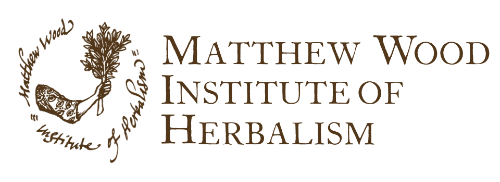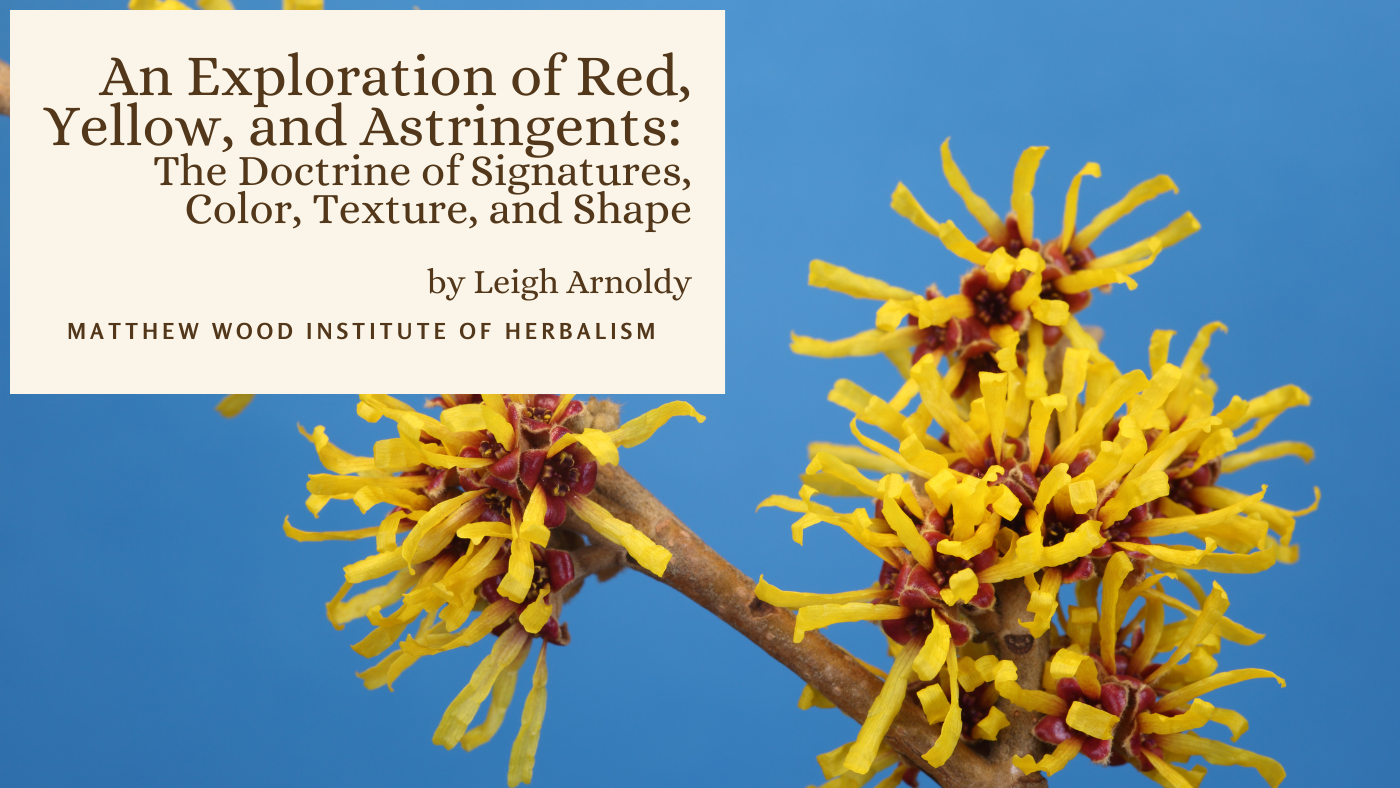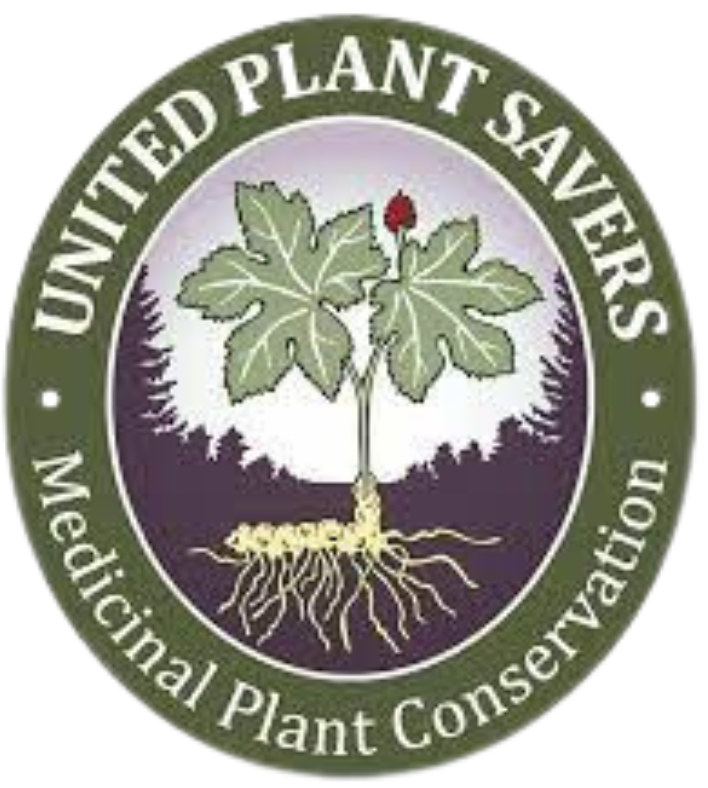What does it mean when you find yellow and red woven together in a plant? These colors can be seen together in the flowers of Witch Hazel, Collinsonia, and even Butcher’s Broom. You can also see these colors in Horse Chestnut: the red and yellow are in the bud, but also in the speckled yellow and red of the outer husk and the deep red of the nutshell itself.
What do you associate with the colors red and yellow?
**** ****
For me, red is the color of blood, heat, iron, and oxidation. Yellow is the color of the visceral, the instinct/your guts, and willpower. The will can be seen as the boundary-keeper: you shall not pass. Yellow might even be the color of serum (plasma), the liquid part of the blood that doesn’t clot, and therefore, the flow.
Although a boundary and a flowing stream are opposites, they are part of the spectrum of “stop and go;” the intelligence of the color yellow may be the mindful discrimination of what stays and what moves on. Yellow is often associated with organs that practice this type of discrimination, such as the liver, which is constantly throwing switches, determining what needs to be processed and when.
When red and yellow end up being paired together, you are putting the blood up against a boundary-keeper, and the contrast creates an image of a well-defined wall. You are also clearly defining two different components of the blood: the part that clots (red blood cells), and the part that does not (yellow serum).
A few examples: You can see this in the striped look of the red stamen versus the yellow flower of Collinsonia. As the Witch Hazel flower matures, the red center is contained within the thready, yellow petals. And the deep, red Horsenut is contained within the yellow husk.
Some of these examples specialize even further, taking their shape into consideration: both the Horse Chestnut and the Witch Hazel flower look like very concentrated areas of blood or vessels that are barely contained within the frazzled and painful-looking Horse Chestnut husk or the blown-out look of the Witch Hazel flower. The specialty is varicosities, such as hemorrhoids, where the vessel walls are too loose to retain a well-functioning shape, and are now suffering from a breach.
Varicose veins respond to astringents, which give tone and provide clear boundaries of the vein’s walls, lending integrity to their structure. All four of these plants are classified as “astringent.”
We can thank the plant for giving us a clue: When we employ the meaning of color, texture, and/or shape of a plant, we are often given insights into a plant’s intelligence or what many people would call its herbal use. This method of identification is called the Doctrine of Signatures, and the signs for Collinsonia, Witch Hazel, Butcher’s Broom, and Horse Chestnut are the red and yellow color pairings found in the plant. Going further, the shape of Witch Hazel flowers and the texture of nuts of Horse Chestnut also indicate painful and rangy varicose veins.
Sources: https://en.wikipedia.org/wiki/Serum_(blood)
**Disclaimer**
The information provided in this digital content is not medical advice, nor should it be taken or applied as a replacement for medical advice. Matthew Wood, the Matthew Wood Institute of Herbalism, ETS Productions, and their employees, guests, and affiliates assume no liability for the application of the information discussed.
**Disclaimer**
The information provided in this digital content is not medical advice, nor should it be taken or applied as a replacement for medical advice. Matthew Wood, the Matthew Wood Institute of Herbalism, ETS Productions, and their employees, guests, and affiliates assume no liability for the application of the information discussed.


